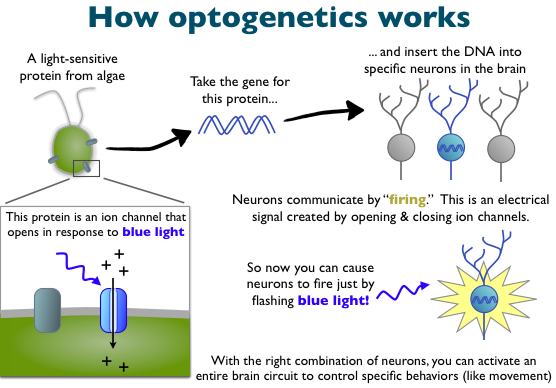Scientist-led conferences at Harvard, Stanford and MIT
-
“Nanosponge vaccine” induces immune response to fight MRSA toxins
http://www.utsandiego.com/news/2013/Dec/01/vaccine-nanoparticles-ucsd-efficient/ UCSD professor Liangfang Zhang has developed a “nanosponge vaccine” which has enabled the immune systems of mice to block the adverse effects of the alpha-haemolysin toxin from MRSA—both within the bloodstream and on the skin. The nanosponges in the “toxoid vaccine” platform are bio-compatible particles made of a polymer core wrapped in a red-blood-cell membrane. Each…
-
Algorithm identified genes could be “turned off” for anti aging effect
http://www.cs.tau.ac.il/~ruppin/mta_aging.pdf Tel Aviv University Professor Eytan Ruppin‘s lab has developed an algorithm to predict which genes can be “turned off” to create the same anti-aging effect as calorie restriction. “Most algorithms try to find drug targets that kill cells to treat cancer or bacterial infections,” said Keren Yizhak, lead researcher. “Our algorithm is the first…
-
Paraplegic may kick off 2014 FIFA World Cup using brain controlled exoskeleton
http://www.copa2014.gov.br/en/noticia/brazilian-neuroscientist-miguel-nicolelis-unveil-walk-again-project-fifa-world-cup-brazil Duke Professor Miguel Nicolelis‘s brain controlled exoskeleton technology may enable a paraplegic teen to kick off the 2014 World Cup in Brazil. The plan is for the teenager to walk onto the field, cock back a foot, and swing at a soccer ball, using a mechanical exoskeleton controlled by his/her brain. Motorized metal braces tested…
-
“Vapor nanobubble” laser scanner detects malaria through skin
http://www.pnas.org/content/early/2013/12/26/1316253111.abstract Rice University researchers have developed noninvasive technology that accurately detects malaria through the skin in seconds with a laser scanner. The “vapor nanobubble” requires no dyes or diagnostic chemicals, and there is no need to draw blood. In a recent study, the technology detected even a single malaria-infected cell among a million normal cells with…
-
Johns Hopkins develops thought controlled prosthetic arm and “targeted innervation” technique
http://hub.jhu.edu/2013/01/02/prosthetic-arm-60-minutes The number of researchers developing advanced prosthetics, particularly thought controlled limbs, is increasing rapidly. This can significantly impact the lives of many. In Johns Hopkins Universty’s Applied Physics Lab, a motorized arm with a five fingered hand that operates much like human hand is nearing completion. Professor Michael McLoughlin and trauma surgeon Albert Chi have developed a…
-
Inkjet printed eye cells
http://iopscience.iop.org/1758-5090/6/1/015001/article Cambridge professors Keith Martin and Barbara Lorber have used inkjet printing technology to print cells taken from the eye. This could lead to the production of artificial tissue grafts made from the variety of cells found in the human retina and may aid in the search to cure blindness. The researchers used a piezoelectric inkjet printer device…
-
“Neural Dust” records from thousands of sites in the brain
http://arxiv.org/abs/1307.2196 Current Brain-computer interfaces offer finite resolution, are hard to apply to many brain regions, and can only stay directly connected to the brain for a short period of time due to their invasiveness. Berkeley researchers have proposed an ultra-small, ultrasound-based neural recording system called “neural dust”. It consists of thousands of sensors that are 10-100 micrometers…
-

Stem cells converted to functional lung cells; could impact modeling, drug screening, transplantation
http://www.nature.com/nbt/journal/vaop/ncurrent/full/nbt.2754.html Columbia professor Hans-Willem Snoeck and colleagues have transformed human stem cells into functional lung and airway cells. This has significant potential for modeling lung disease, screening drugs, studying human lung development, and, ultimately, generating lung tissue for transplantation. The research builds on Dr. Snoeck’s 2011 discovery of a set of chemical factors that can turn human embryonic…
-
Kinect training promotes brain reorganization after stroke
http://www.nrronline.org/article.asp?issn=1673-5374;year=2013;volume=8;issue=31;spage=2904;epage=2913;aulast=Bao;type=0 Sun Yat-sen University researchers claim that Kinect based virtual reality training could promote the recovery of upper limb motor function in subacute stroke patients, and brain reorganization by Kinect based training may be linked to the contralateral sensorimotor cortex. They have completed a study in which they located the target brain region for Kinect…
-

Optogenetics may enter brain therapy mainstream
http://www.npr.org/blogs/health/2013/12/26/256881128/experimental-tool-uses-light-to-tweak-the-living-brain Optogenetics, the process of controlling brain cells using light, could be used to understand and treat brain diseases, including epilepsy and depression. Previously, scientists relied on fMRI and a wire probe inserted into the brain to switch on cells. The technique must be refined before it can be used in people or in remote…
-
Smart glasses see veins beneath skin
http://evenamed.com/products/glasses Eyes-On smart glasses allow healthcare providers to see the vasculature beneath a patients skin, simplifying intravenous placement. Veins are seen by the the device’s capture of multi-spectral lighting through two stereoscopic cameras which highlight deoxygenated hemoglobin. The cameras can transmit the images wirelessly, store photo and video documentation of a procedure, and connect to a hospital…
-
Miniature pacemakers inserted with out surgery
http://www.technologyreview.com/news/522306/worlds-smallest-pacemaker-can-be-implanted-without-surgery/ Medtronic and St. Judes Medical have developed miniaturized pacemakers that can be implanted in the heart through blood vessels via an incision in the thigh, reducing or eliminating the need for invasive surgery. Doctors in Austria implanted the 24mm Medtronic device in a patient last week as part of a human trial. St. Jude…
Got any book recommendations?